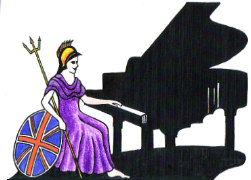Teachers, Accompanists and Piano Entertainers in the UK

UK Piano Page

Browse Locations England » London » Clapham Common
Clapham Common, London SW18 3PA
England
I provide piano, theory and composition lessons at all levels, for children (5 & up) and adults. For beginner piano students I emphasize learning by ...
40 Cubitt Terrace
Clapham Common, London SW4 6AR
England
In addition to piano tuition – piano accompaniment, vocal and performance coaching is also available
Jocelyn teaches pupils of all ages - from five ...
134 Islingword Road
Brighton, East Sussex BN2 9SH
England
Pianola sales and services. Music rolls sales and
Harrogate Road
Beamsley Hill
Skipton, North Yorkshire BD23 6HZ
England
Main dealers for Kemble Pianos. Complete range
Regency Workshops
Hunters Bar
Sheffield, South Yorkshire S1 2PN
England
Suppliers of quality pianos, new and secondhand
20 Moorfield Drive
Baildon
Shipley, West Yorkshire BD17 6LQ
England
Cunningham Piano always has a varied selection of
126 Meadfield Rd
Langley
Langley, Berkshire SL3 7JF
England
Used and new acoustic and digital piano
Music Festival for performers and guests Our 10th
18-06-2022 12:30PM
The Morecambe Bay Piano Group was set up to extend
11-12-2021 01:00PM
The Morecambe Bay Piano Group was set up to extend
08-01-2022 01:00PM
The Morecambe Bay Piano Group was set up to extend
12-02-2022 01:00PM